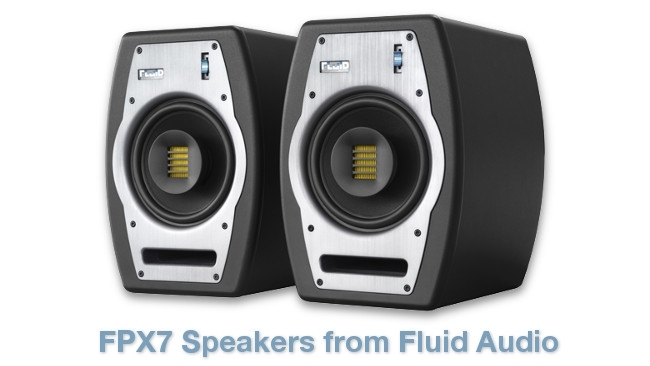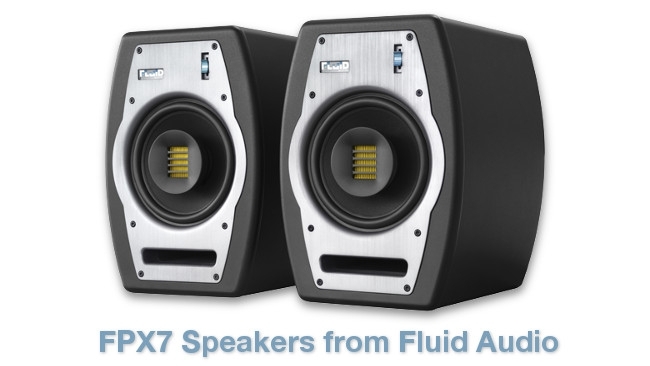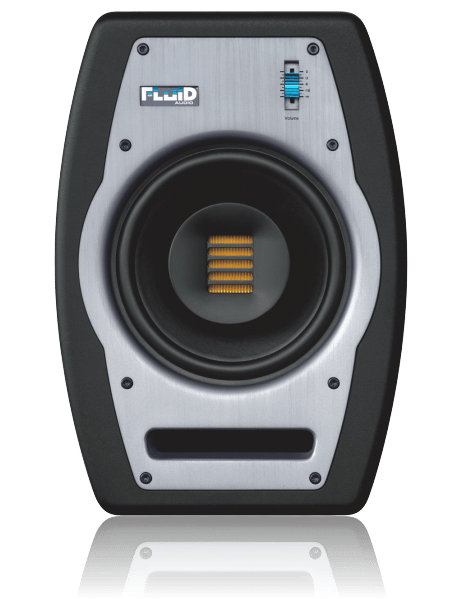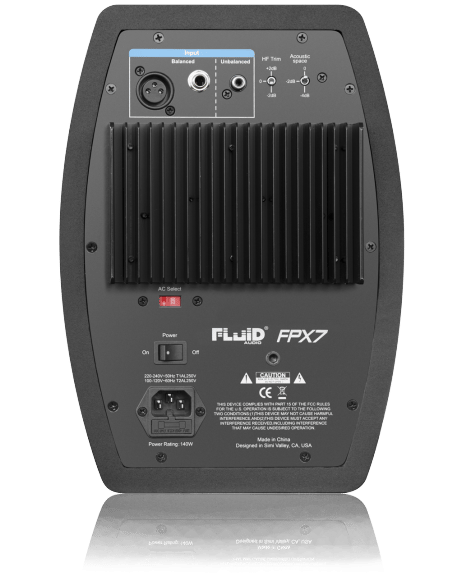
 FPX7 Speakers From Fluid Audio
FPX7 Speakers From Fluid Audio
We profile the FPX7 studio monitoring speakers from Fluid Audio, which may represent excellent value from key innovations.
Fluid Audio is a relatively new company with a focus on studio monitoring and PA speakers. Founded by loudspeaker engineer Kevin Zuccaro in 2011, the firm's opening range of speakers has been keenly priced and designed to fit the budgets of smaller project studios, whilst still aiming to achieve a great sonic balance, giving the end user a detailed sound stage to work within.
Zuccaro's own experience is drawn on heavily at the design phase. He had a stint designing for Cerwin-Vega, moving on to design and oversee the monitors division of M-Audio, whilst under ownership of Avid. The early designs have been solid performers in a packed market place where it can be hard to stand out, but nothing ground breaking, at least not until the latest Fluid Audio FPX7 speakers arrived.
 FPX7 Front View
FPX7 Front View
Design innovation
The FPX7 combines two well regarded design techniques with ever rising popularity in one unique package, leaving you wondering how come we haven't seen this seemingly natural progression before.
Firstly we have the AMT tweeter or, to give it its full title, the 'Air Motion Transformer'. This certainly isn't a new design, with speakers taking advantage of its benefits going back over 40 years. For a number of current users, they may not have become aware of it until ADAM audio brought it's ART branded variation to the market. Since then, however, a growing number of firms have chosen to adopt it on their speaker ranges and with good reason. A well designed ribbon solution can offer an improved transient response, as well as giving the additional benefits of improved imaging and clearer detail, when compared to more traditional domed speakers designs.
So far so good, but where it takes a leap into the studio unknown is by fitting the AMT tweeter into the center of the woofer in a Coaxial arrangement. Coaxial speakers are also well established and are widespread both in the studio and outside world, with designs of this nature being popular in car speakers that have a need to be fitted in small spaces leaving as small as footprint as possible.
Whilst the design is, by its very nature, space efficient, the other key benefit of this style of speaker for users in the studio is that it can offer a wider field of listening, thanks to both drivers radiating sound from the same point, giving the wider listening sweet spot to work with. It has to be noted, however, that this can be the most troublesome part of coaxial designs, as the outer cones' lower end frequencies can end up modulating the high end, causing intermodulation distortion if not carefully considered. However, the AMT tweeter, with it's wider dispersion and fitted wave guide, should help ensure a more even sound signature and overcome the shortcomings that can sometimes hamper this style of speaker.
 FPX7 Rear View
FPX7 Rear View
Bang for the sonic buck
Also of note is that the FPX7 has a DSP controlled crossover, implemented to ensure zero variance between the woofer and tweeter, with a further enhanced DSP model called the FPX7 DSP+ edition to follow later in the year. All this means that the end listener should experience a wider and more detailed soundscape, one that could quite possibly punch far above its weight sonically and should certainly be experienced if you're considering an upgrade at this price point over the coming months.
The Fluid Audio FPX7 is shipping now in the USA at a retail price of $549, with other regions to follow.
Features and Specs
FPX7 Highlights:
Seamless, transparent response in a compact footprint
7" composite cone, low-frequency driver
Air motion transformer (ribbon) tweeter provides an extremely fast and accurate response
Bi-amplified 140Watt Class A/B amplification (90w woofer/50w AMT tweeter)
Acoustic Space Control lets you calibrate the FPX7 to your mixing environment ( 0, -2, -4db )
Tweeter high frequency trim control ( +2, 0, -2db )
Fader Volume control on front baffle for easy access
42Hz – 27kHz frequency response
Front loaded slot port for directional bass response
Amplifier standby function to conserve energy
Specifications
• Frequency response: 42 Hz – 27 kHz
• Crossover frequency: 3.5 kHz
• Amplifier power: 140 watts RMS
• Signal-to-noise: > 100 dB (typical A-weighted)
• Polarity: Positive signal at + input produces outward LF one displacement
• Input impedance: 20 k ohms balanced, 10 k ohms unbalanced
• Input sensitivity: 85 mV pink noise input produces 95dBA output SPL
@ one meter with volume control at maximum
• Power: Factory programmed for either 100 – 120V – 60Hz, 220 – 230V – 50Hz
• Protection: RF interference, output current limiting, over temperature, turn-on/off transient and subsonic filter
• Cabinet: Vinyl-laminated MDF
• Size (single monitor): 256 x 174 x 193 mm (HxWxD)
• Weight (single monitor): 16.8 lbs. / 7.5kg
Tags: Audio


Comments